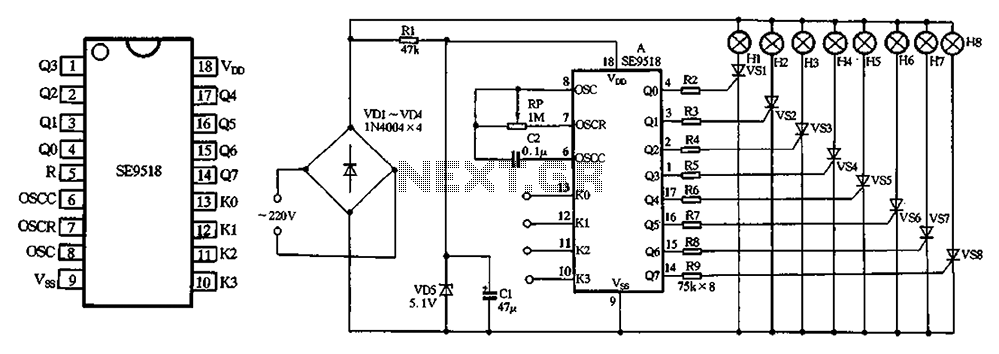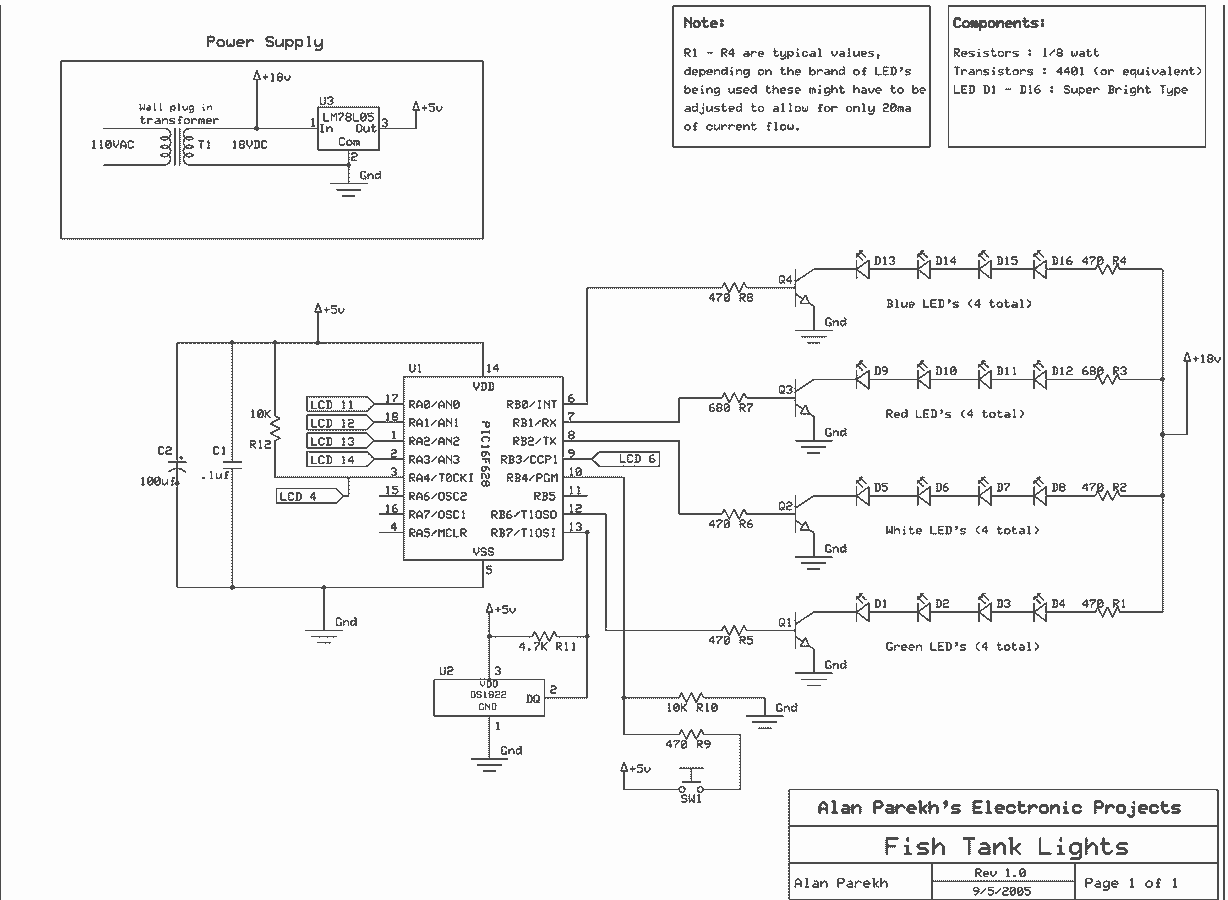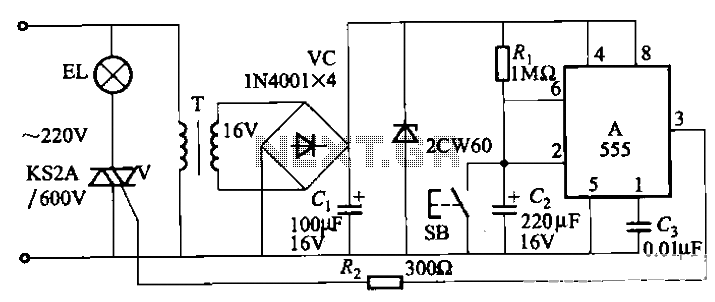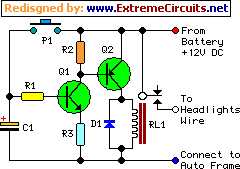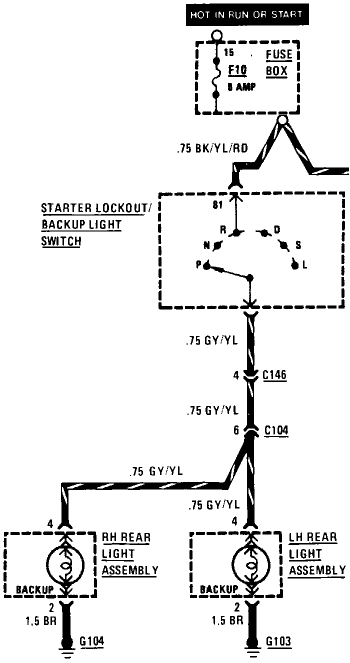
Dimmable Fluorescent Lights Bulbs
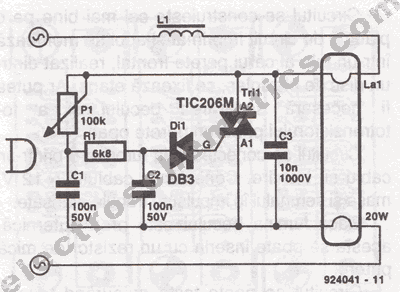
The brightness of a fluorescent light bulb or neon tube is not as easily adjustable as that of an incandescent bulb because it requires a much higher voltage to start. Once initiated, it operates at the electrical network voltage. Typically, this high starting voltage is achieved through the interruption of current flowing through a choke coil. A starter is usually employed to ensure a sufficiently large current passes through the tube filaments. The presented dimmable fluorescent light circuit takes over these starter functions and allows for the adjustment of the brightness of fluorescent bulbs. When the neon tube is switched on, the brightness control potentiometer, P1, should be set to the maximum brightness position to facilitate starting.
The described dimmable fluorescent light circuit incorporates several key components to achieve both the starting and brightness adjustment of fluorescent tubes. At its core, the circuit includes a choke coil, which is essential for creating the necessary high voltage to ignite the fluorescent tube. The choke coil works by inducing a back EMF (electromotive force) when current is interrupted, thus generating the required voltage spike.
In addition to the choke, the circuit features a starter component that can be a thermal or electronic starter. This component is responsible for momentarily allowing a high current to flow through the filaments of the fluorescent tube, thereby heating them up to facilitate the ionization of the gas within the tube. After the tube ignites, the starter disconnects, allowing the tube to operate at the lower supply voltage.
The brightness control potentiometer, P1, is a variable resistor integrated into the circuit, allowing users to adjust the amount of current flowing through the fluorescent tube. By altering the resistance, the potentiometer can effectively control the brightness of the light emitted. When initially powering the circuit, it is crucial to set the potentiometer to its maximum position to ensure the tube receives enough current to start properly.
Overall, the design of this dimmable fluorescent light circuit not only improves the usability of fluorescent lighting by allowing for brightness adjustments but also simplifies the starting process by integrating the functions of traditional starters within the circuit. This results in an efficient and user-friendly solution for controlling fluorescent lighting in various applications.The brightness of a fluorescent light bulb or neon tube cannot adjust as easily as that of a incandescent bulb because it starts only when a voltage is much higher than that of the network, then remains on at electrical network voltage. Normally, the high starting voltage is obtained by the interruption of current that circulates through a choke c
oil. This is usually a starter to ensure a sufficiently large current through the tube filaments. These starter functions are taken over by this dimmable fluorescent light circuit presented which also allows adjustment of the fluorescent bulbs brightness. When we switch on the neon tube, the brightness control potentiometer, P1, should be placed on the position of maximum brightness, in order to facilitate the start.
🔗 External reference
The described dimmable fluorescent light circuit incorporates several key components to achieve both the starting and brightness adjustment of fluorescent tubes. At its core, the circuit includes a choke coil, which is essential for creating the necessary high voltage to ignite the fluorescent tube. The choke coil works by inducing a back EMF (electromotive force) when current is interrupted, thus generating the required voltage spike.
In addition to the choke, the circuit features a starter component that can be a thermal or electronic starter. This component is responsible for momentarily allowing a high current to flow through the filaments of the fluorescent tube, thereby heating them up to facilitate the ionization of the gas within the tube. After the tube ignites, the starter disconnects, allowing the tube to operate at the lower supply voltage.
The brightness control potentiometer, P1, is a variable resistor integrated into the circuit, allowing users to adjust the amount of current flowing through the fluorescent tube. By altering the resistance, the potentiometer can effectively control the brightness of the light emitted. When initially powering the circuit, it is crucial to set the potentiometer to its maximum position to ensure the tube receives enough current to start properly.
Overall, the design of this dimmable fluorescent light circuit not only improves the usability of fluorescent lighting by allowing for brightness adjustments but also simplifies the starting process by integrating the functions of traditional starters within the circuit. This results in an efficient and user-friendly solution for controlling fluorescent lighting in various applications.The brightness of a fluorescent light bulb or neon tube cannot adjust as easily as that of a incandescent bulb because it starts only when a voltage is much higher than that of the network, then remains on at electrical network voltage. Normally, the high starting voltage is obtained by the interruption of current that circulates through a choke c
oil. This is usually a starter to ensure a sufficiently large current through the tube filaments. These starter functions are taken over by this dimmable fluorescent light circuit presented which also allows adjustment of the fluorescent bulbs brightness. When we switch on the neon tube, the brightness control potentiometer, P1, should be placed on the position of maximum brightness, in order to facilitate the start.
🔗 External reference
